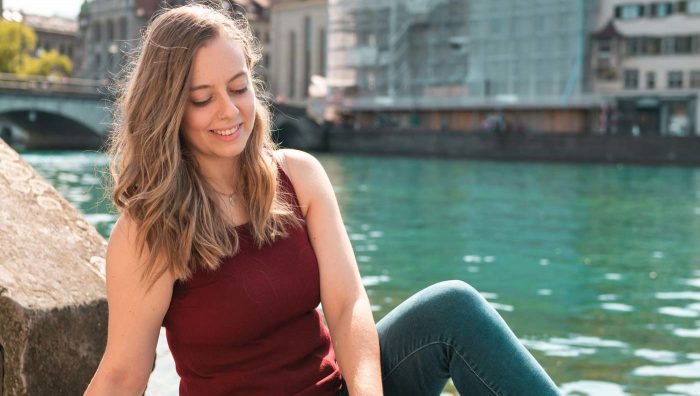
Lauren Caris Short is a British food photographer based in Zurich, Switzerland. She’s worked with brands and clients all over the world, and has had work featured in magazines globally. Lauren is also a food photographer educator and teaches food photography through her website and YouTube channel. She’s taught thousands of students through her food photography courses which she runs from Food Photography Academy. Follow her on Instagram @lauren.caris or visit her personal website.

What was the concept of the shoot?
I wanted to create an action shot with a dramatic icing sugar cloud for this shot. Action shots help bring a lot of life and interest into food photos, adding a human element, and they are also technically challenging. In order to capture this sprinkle the way I envisioned it, I needed to light the shot in a very specific way. I wanted some motion blur on the icing sugar, but not too much.
What setup and lighting did you use to get the shot?
I used a single light source to the left side of the subject. The flash heads I used were two, PIKA200 TTLs.

In order to capture a frozen in time look to the icing sugar cloud, I needed to use a low flash power that gives an equivalent shutter speed of around 1/8000 of a second. Because of this, the low power also means the shot would have been underexposed if I just used one flash head, so I used my double flash head bracket, which allows me to connect 2 PIKA200 TTLs with two bulbs, to get double the output whilst still maintaining a fast shutter speed look.

The flash heads were mounted into my 120cm octagonal soft box, which I used with a single layer of diffusion. I also placed a black foam board to the right of the subject, and to the left to screen off the back half of the scene, adding to the dark and moody feel.

How did shooting tethered help you achieve the shot you wanted?
In order to capture this shot, I needed to be able to fire my camera in burst mode, whilst continuously shaking the sieve, in order to create a series of images, so I could pick the best sprinkle at the end. At the beginning, I also took a shot of the banana bread on its own to composite into the image, as after a while it would be so caked in icing sugar, it definitely wouldn’t look appetizing. Tethering allowed me to shake the icing sugar with one hand, and fire my camera off with the other. Without tethering, this isn’t possible due to the position of the camera.

What was your biggest challenge?
Being the photographer AND the action maker. When I’m doing these personal, non-client shoots, I am mostly shooting alone. I love that tethering allows me to be creative in my work on my own. It’s also an opportunity for me to work on my food styling skills.
What type of post-processing was involved?
I took two images and composited them together for this shot. When you’re working with a subject like an icing sugar sprinkle, the best looking cloud might come later on in the shoot, by which point the banana bread would be totally caked in icing sugar, and not looking good at all. Therefore I started with one photo of the banana bread on it’s own, that I could use to composite in later. After I edited the images in Lightroom, I processed them first in Lightroom, then imported my final two shots into photoshop, to bring them together by using layer masks.

What was the logistics and/or gear needed to achieve this shot?
I used a vinyl backdrop from Capture by Lucy, this allowed me to tape it to the wall behind and create a slope so there were no harsh edges in the frame. I use a simple table on wheels from IKEA to place my scene in place.
I used my Manfrotto 058B tripod to hold my Sony A7iii camera. This was essential because in order to composite two images together to create the final look, the banana bread had to be in exactly the same position each time.
For lighting I used 2, PIKA200 TTL’s, mounted into a double flash head adapter, with a 120cm octagonal softbox with single diffusion (Pixapro).
I also added 2 pieces of standard black foam core to manipulate the light towards the back of the scene and create some negative fill.
I used a Tether Table Aero with an Aero XDC to keep my laptop near the scene while I stood in the correct position to shake the icing sugar. I connect my camera to Sony Imaging Edge via a tethering cable.


